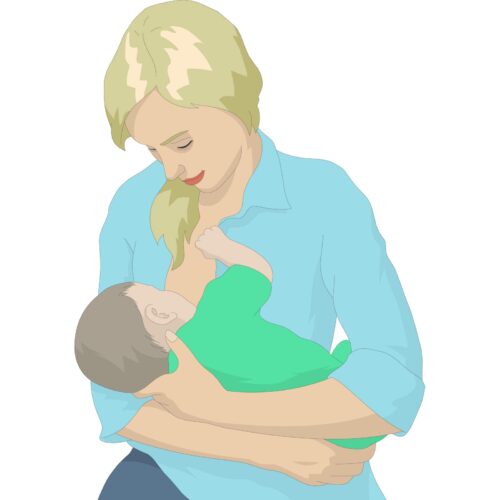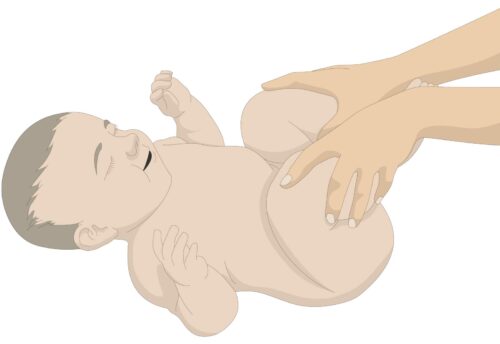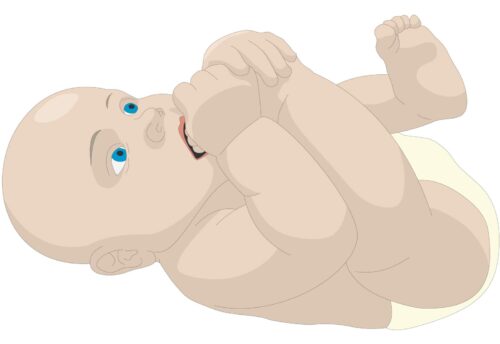Short, sharp and panicked, or low-pitched and long-lasting: baby cries raise our blood pressure and tug at our heartstrings like no other sound in the world. But what if you could understand baby cries just by listening to syllable patterns in his crying? Do infants in Japan, New Zealand, and Sweden really have the same ability to communicate with us when they cry? Read on to find out about what is hidden in your baby’s cry.

Dunstan Baby Language
An Australian mother and opera singer called Priscilla Dunstan claims to have a photographic sound memory. This allows her to detect recurring vocal patterns in different types of baby crying.
Through her work, she has identified five different baby cries that contain five different syllables. Dunstan explains that babies use these syllables when they cry for five different reasons. Her theory hasn’t been scientifically proven, but feedback indicates that she might be onto something good.
Parents report mixed success. Some claim that they are amazed at how accurate her sound categories are and how quickly they can decode a cry. Others prefer to go with their gut feeling in the heat of the moment, rather than trying to analyse sounds.
Decoding Tips
Dunstan recommends that parents listen to the beginning of the baby’s cry, as the signs will be more obvious then. She also admits that babies make more than one syllable of sound when they cry, but advises parents to act on the word they hear most.
The Dunstan Five
The five types of cries that Priscilla Dunstan lists are as follows:
I’m hungry (neh)
This cry is distinct because of the “n” sound that crops up repeatedly. It’s rhythmic, repetitive and will probably be accompanied by rooting or sucking. You can resolve this drama quite easily by breastfeeding or preparing formula.

I’m tired (owh)
This wail is whiny and nasal. It begins softly and builds up continuously. You might notice that it’s accompanied by yawning or eye rubbing, puffy or red eyes and a distinct oval mouth shape. This oval mouth shape is responsible for the syllable that your baby uses the most: owh.
If you hear this type of cry, you can help your baby to fall asleep using whatever works for her: a swaddle, a pacifier, any sort of movement, singing, rocking, or a ride in the pram or car. White noise can also be useful.
I’m uncomfortable (heh)
This almighty racket indicates that your baby is in some sort of discomfort. It could be due to a soiled nappy, tight clothing or a too high or too low body temperature.
The cry comes on suddenly and it is piercing, panicked and breathy. The breathiness brings out a “heh” sound that your baby uses over and over again. You might find that each cry lasts for a long time before your baby takes a deep breath. It usually comes with some physical squirming or a scrunched up face.
Ease your baby’s discomfort: change her nappy, dress her in looser clothing, change her position, rock and soothe her, remove or add layers of clothing, or simply give her a cuddle.
I’ve got gas (eair)
Gas pains can be a bit of a rude shock for your baby. She will let out intense screams and fidget while she’s doing it. The sound to listen out for is a longer-lasting “eair” sound. A cry due to gas pains is often accompanied by an arching back, grunting, and maybe moving her knees to her chest.
Help your baby get her gas under control by gently rubbing her tummy, bringing her knees up to her chest, doing “bicycle legs”, rocking her or giving her something soothing to suck on.
There are some great pain-relieving positions to try: “the gas hold” involves placing your baby face down with her belly on your forearm and her arms and legs hanging down freely. You can rub her back while she’s there.

I need to burp: eh
According to Dunstan’s analysis, this cry is a short, sharp and repetitive “eh eh eh” sound, without the breathy “h” that accompanies the discomfort cry. Another clue is the timing: did your baby recently feed? If so, you can help by burping your baby.
The most common and effective positions for burping a baby are over your shoulder, face-down on your lap, or sitting up and leaning forward.
Other Common Types of Crying
In addition to the “Dunstan Five”, here are a few other common cries you might find distinctive. You might not be able to analyse syllables – Priscilla Dunstan’s theories don’t cover these common reasons a baby might cry.
I’m overwhelmed or frustrated
Sensations such as sound, light and smells can sometimes overwhelm your baby. This type of cry is fussy and whiny. It might come and go or you might see your baby alternate between laughing and crying at first.
A good hint that your baby is overwhelmed is when he turns his head or body away from stimulation. Remove him from bright or noisy environments if you sense that he is overstimulated. Instead, spend some time alone in a quiet, dark room, or turn on some comforting white noise.
Frustration occurs when your baby tries to do things that his body is not quite ready to do, e.g. sucking on his fingers or toes. You can give you baby a helping hand doing whatever he’s trying to do, or distract him with something else.

I’m bored
This cry is also whiny and fussy, and you might not be able to tell the difference from other types of crying just by listening. Like when your baby has been sitting in the same position for a while and needs distracting.
Change her position, giving her a new view or something new to play with. Distract her with a bath, look out the window at the cars, take a walk or sing a song.
I’m scared
A scared baby lets out a high-pitched and screechy wail, sometimes accompanied by a startled look. Hold your baby and comfort her, moving her away from the perceived danger if necessary.
I’m sick
If your baby is feeling under the weather, his cries might be more like whimpers. Weaker cries are lower pitched and sound lethargic. If you are at all concerned that your baby is unwell, regardless of his cry, then my advice is to seek medical attention.
My Baby Won’t Stop Crying and I Don’t Know Why
Sometimes, even after feeding, soothing, changing a nappy, relieving pain and giving lots of cuddles, a baby will continue to cry for a long time. This could be for no apparent reason.
It could be that time in the evening where everyone’s tired and overwhelmed and your baby has a lot to process. It might be that your baby needs lots and lots of cuddles. Maybe she hears another baby crying and needs to join in. Or, it might be associated with colic.
There’s an App for That
There are a small number of apps on the market that can help you figure out why your baby is crying. Using thousands of pre-recorded cries as a basis for comparison, such apps put baby cries into different categories such as tiredness, hunger or discomfort, and they then suggest how you can calm your baby down.
Some apps claim over 90 per cent accuracy for young babies, based on the results of clinical trials. Two popular apps available are the Cry Translator, developed in Spain, and the recent addition from Taiwan, Baby Cries Translator.
I have no personal experience using apps like these so I don’t know if they work. They probably work well for some and might not work at all for others.
Crying Is Normal and Natural
Some experts believe it’s impossible to tell why a baby is crying just from analysing sound patterns. They also remind us that crying is a normal state of being. Your baby has no other way to communicate just yet. Just like us, sometimes he might just need to let it out to feel better.
Can you hear the difference?
If you’ve become an expert in deciphering your baby’s cries, we want to hear about it! Leave a comment below.



